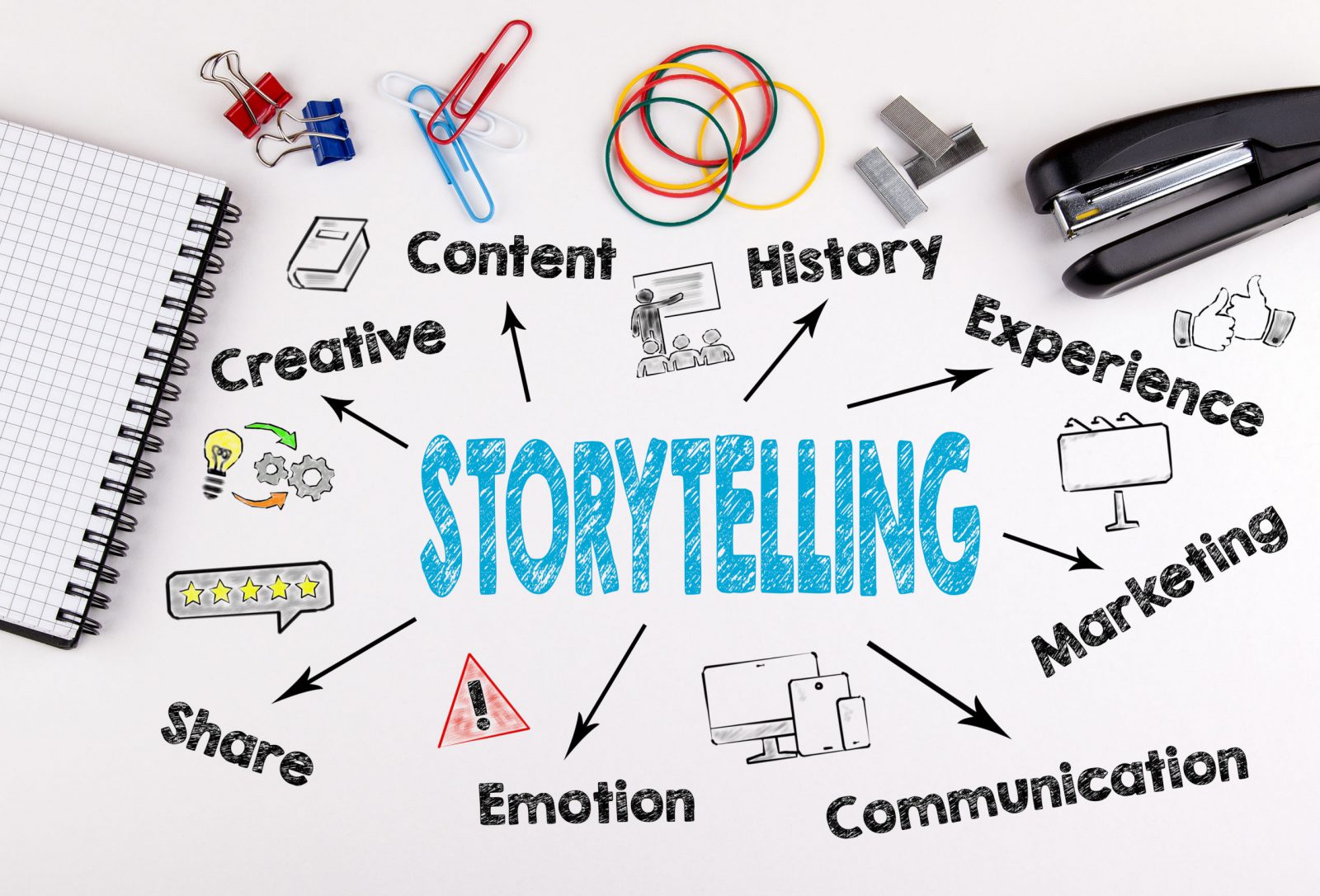Storytelling in B2B Marketing

By Karla Sanders, Engagement Manager at Heinz Marketing
Every single person in this world has a core memory. There are stories inculcated in each person’s mind that evoke complex emotions that can move us to feel or do something. That’s what makes us human! Our senses and emotions are triggered by compelling stories. It’s not surprising that whenever we hear a good story, our levels of oxytocin increase (and that’s a good thing).
Sharing and hearing stories are deeply woven in our daily lives. We share stories on a daily basis with our friends, families, colleagues and even strangers. In fact, how we carry ourselves – the way we dress, speak, and act – can tell a story.
Research conducted by Stanford’s Graduate School of Business found when people listened to pitches, they retain as much as 63% when told as a story vs 5% for statistics alone.
Another study revealed messages delivered as stories can be up to 22 times more memorable than just the facts!
This tells us stories are powerful in reaching the brain and actuating people.
Any good marketer knows storytelling is a great tool when communicating to our target audience.

What is storytelling marketing?
- Storytelling marketing uses narratives to bring ideas to life and move the audience to feel and think something – ultimately influencing them to think positively about your product(s) and ending with a purchase.
- Storytelling matters when communicating to the target audience, most especially in the B2B setting where communication tends to be more personal, as businesses focus on building close relationships in order to close more deals.
- Storytelling in B2B marketing can humanize your brand and help customers understand your products and services, making them feel connected to your company, and comfortable enough to reach out or talk to your sales team to understand the product benefits they are seeking.
Storytelling in the B2B setting
Marketers are storytellers.
While some may argue B2C marketing tends to be more emotional than B2B (as B2C caters to the end customer while B2B communicates to businesses), it is crucial to note the B2B landscape has changed dramatically over the past few years. Targeting the ideal customer in a B2B setting has become more personalized and focused on building close relationships to stand out among the sea of other businesses vying to get your ideal customer’s attention and trust.
Understanding how to apply the basic elements of storytelling to your sales and marketing strategy can not only create meaningful connections, but also win the hearts of your customers.
It can hasten the “like-know-trust” process and turn it into the highly sought “satisfied-loyal-repeat” customer cycle.
How can B2B utilize storytelling?
Understanding how storytelling can propel your sales and marketing strategies is crucial to your business and knowing how to effectively utilize and implement it in your business is even more critical. It is make-or-break to your success.
Here are excellent ways to use storytelling, weaving them into your customer experience:
- Humanize your business approach – Be authentic and genuine with your business communications. Use layman terms with easy-to-remember, bite-sized information to avoid overwhelming your ideal customers. Remember it’s not just about the marketing advertisements your target audience sees on your website, blog posts or social media, more importantly, it’s about how holistic and human your messaging and communication is across all your customer touchpoints (product demos, newsletters, etc.) Conducting webinars and having a friendly, approachable brand identity and brand voice are also great examples of this. The human interaction, hearing and seeing the speakers, and fellow attendees all stimulate human connection. (Read also: 4 Tips for Making Your Story Into Theirs by Tom Swanson)
- Show empathy to your customers – Designing an Ideal Customer Profile (ICP) is one of the most important basic elements to nail in Marketing. Understanding your target customer and their psychographics will help you know what customer pain point(s) your business can address to genuinely connect with them. You don’t just intend to close a deal for profit’s sake, but you should also keep in mind you are helping a customer with a business. Sharing case studies to show unique insights and business trends are two examples. Training your sales team to conduct an empathetic way to reach out to customers is also another great example. (Read also: Empathy: The Key to Better Business by Dan Baron)
- Create a single-minded customer experience – Your target customer should be the at the heart of your business. Building a unified customer experience that makes all your customers feel your products and services directly speak to them, with cohesive transitions across all your channels and platforms, will guarantee a great customer experience and favorable response. As they go through each of the different steps in the buying journey, they should receive consistent messaging, unwavering personalized attention, and utmost priority from your business.
Storytelling to cultivate lasting relationships
Infusing storytelling into your sales and marketing can create a ripple effect of curiosity, attention, persuasion, and motivation touching your potential customers.
These are the desirable stages as you lead the customer to make the ultimate decision and you make a sale.
Please don’t make storytelling in B2B just a tactic or afterthought in your business strategy.
Weave it into your company’s ethics. Conduct business so you can cultivate meaningful and lasting relationships with your customers.





